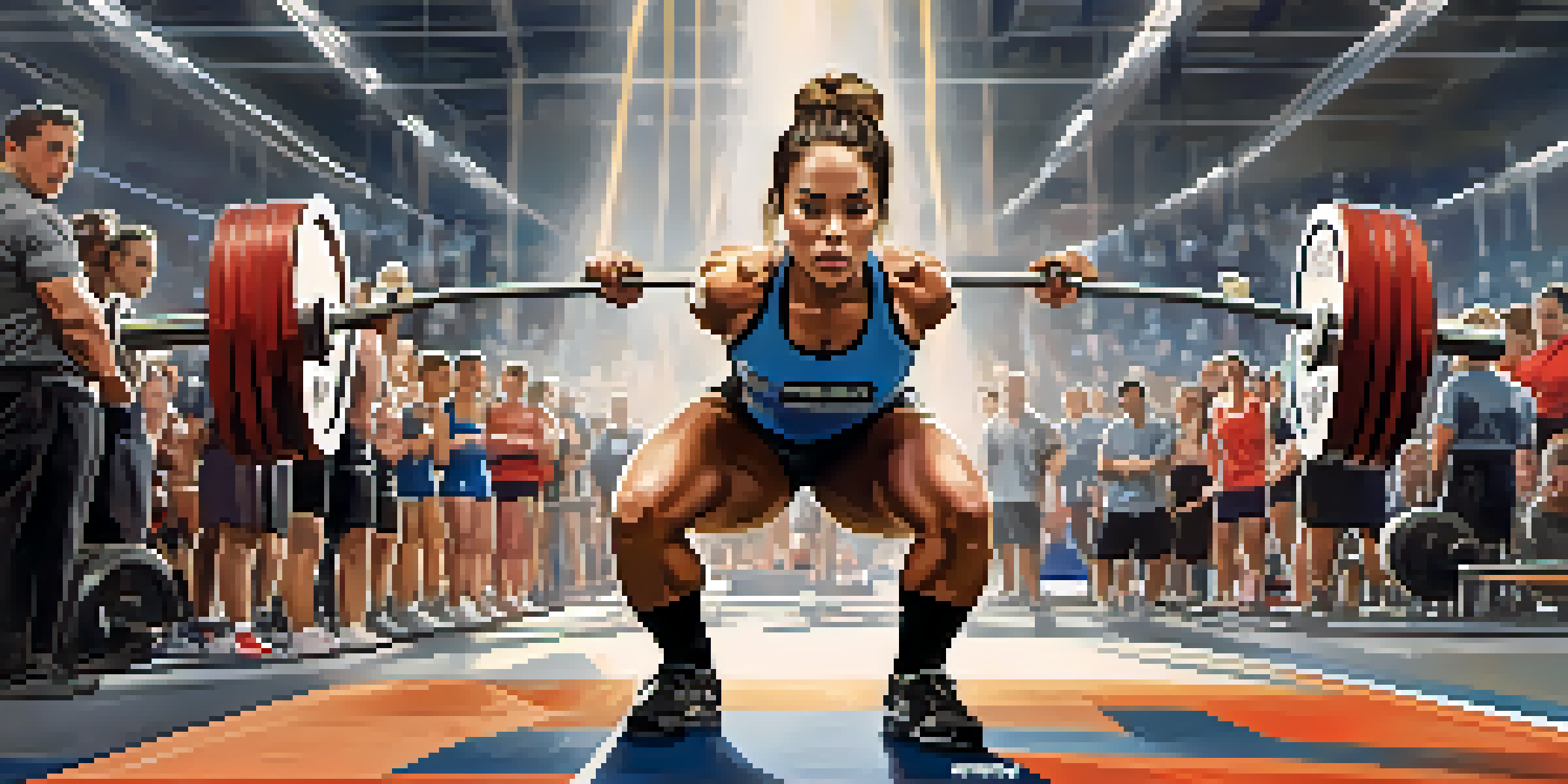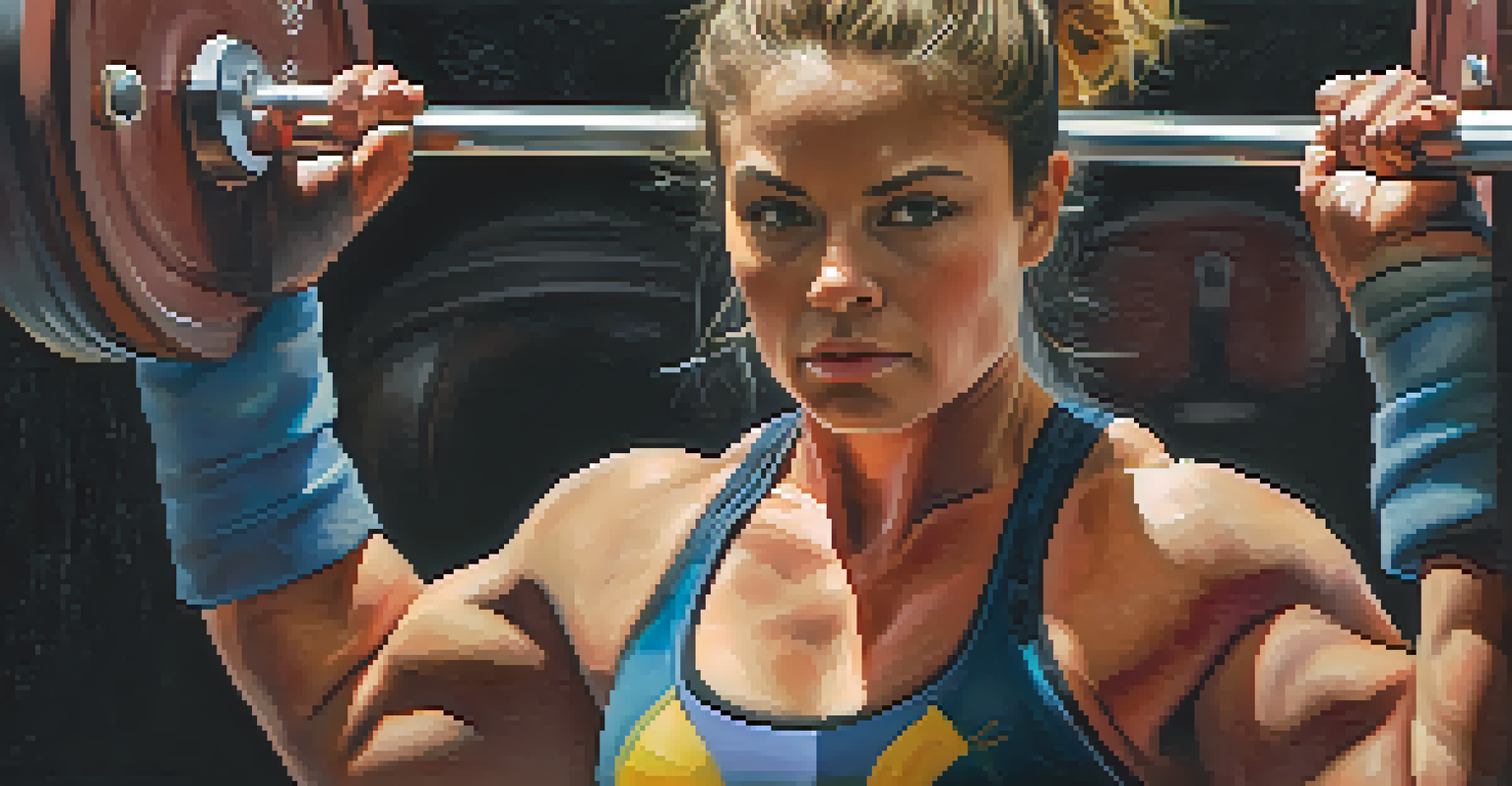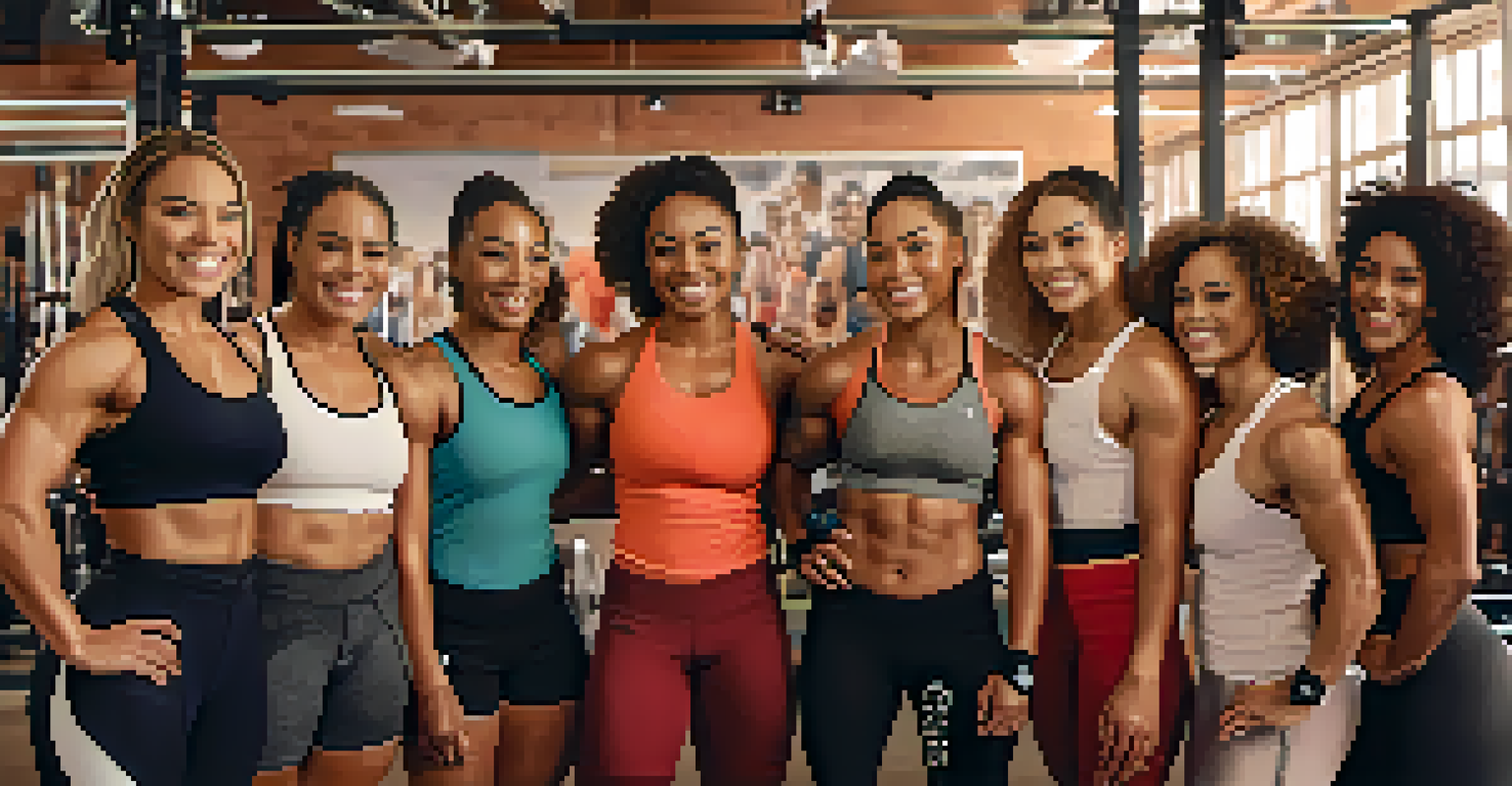The Evolution of Women's Powerlifting: A Historical Perspective

The Early Days: Women's Strength in History
Women have showcased their strength throughout history, often in informal settings. From ancient civilizations where women engaged in physical activities to modern times, their strength was celebrated in various cultures. However, these activities rarely received official recognition or structure, which limited women's visibility in strength sports.
Strength does not come from physical capacity. It comes from an indomitable will.
In the late 19th century, societal views began to shift, allowing women to participate in more organized forms of physical competition. This period saw the emergence of women participating in early athletic events, but powerlifting as a distinct sport was still in its infancy. Despite the challenges, women began to carve out spaces for themselves in athletics, laying the groundwork for future developments.
As the 20th century approached, the concept of women’s athleticism started gaining traction, setting the stage for the formalization of powerlifting. Events like the first women's Olympic games and other competitions began to inspire women to pursue strength sports more seriously, even if powerlifting itself was not yet widely recognized.
The Birth of Women's Powerlifting Competitions
The first official women's powerlifting competitions emerged in the 1970s, a game-changer in the strength sports landscape. Women athletes began to compete in bench press, squat, and deadlift events, showcasing their power and skill. This period marked a significant turning point, as women’s participation in powerlifting was formally acknowledged.

Organizations like the International Powerlifting Federation (IPF) started to recognize women's events, providing a structure for competitions. This recognition was critical for promoting the sport and encouraging more women to participate. The inclusion of women's divisions signified a broader acceptance of female athletes in traditionally male-dominated sports.
Women's Powerlifting Emerges
The formal recognition of women's powerlifting competitions in the 1970s marked a significant turning point for female athletes in strength sports.
As more competitions arose, female powerlifters began to gain visibility, inspiring others to join the movement. The camaraderie and support among women in powerlifting helped create a community that celebrated strength and resilience. This era laid the foundation for future advancements and achievements in women's powerlifting.
The 1980s and 1990s: Growth and Recognition
The 1980s and 1990s saw significant growth in women's powerlifting, with more athletes emerging on the scene. Competitions became more frequent, and the quality of performance improved dramatically as women trained harder and more strategically. This period was crucial for establishing powerlifting as a legitimate sport for women.
The future belongs to those who believe in the beauty of their dreams.
Media coverage also began to expand, bringing greater attention to female powerlifters and their achievements. Stories of perseverance and triumph resonated with audiences, helping to challenge stereotypes about women’s strength. As a result, public perception of women in strength sports began to shift positively.
Additionally, the establishment of national and international records for women in powerlifting offered further validation. These records not only showcased the incredible talent of female athletes but also inspired a new generation of lifters to push boundaries. The sport was evolving, and women were at the forefront of this change.
Breaking Barriers: Notable Female Powerlifters
Throughout the evolution of women's powerlifting, several athletes have emerged as trailblazers. Pioneers like Becca Swanson and powerlifting legend, Anna Arzhanova, broke records and stereotypes, paving the way for future generations. Their dedication and success helped to elevate the sport's profile.
These athletes not only excelled in competitions but also served as role models for aspiring lifters. By sharing their journeys, they inspired countless women to take up powerlifting, proving that strength knows no gender. Their achievements highlighted the importance of representation in sports.
Social Media Amplifies Women's Strength
Platforms like Instagram and YouTube have played a crucial role in building communities and promoting the visibility of female powerlifters.
As more women entered the sport, the community continued to grow, fostering a supportive environment. The stories of these remarkable athletes became a source of motivation, encouraging more women to embrace powerlifting and pursue their dreams. Their legacies continue to influence the sport today.
The Role of Social Media in Powerlifting's Popularity
In the digital age, social media has played a crucial role in the rise of women's powerlifting. Platforms like Instagram and YouTube allowed athletes to showcase their training, share tips, and connect with fans. This accessibility helped demystify the sport and drew in newcomers eager to learn.
Women powerlifters began to build online communities that provided support and encouragement. Social media has become a space for sharing successes, struggles, and advice, fostering a sense of belonging. These platforms have made it easier for women to find inspiration and motivation from fellow lifters worldwide.
Moreover, the visibility gained through social media has attracted sponsorships and partnerships, further legitimizing women's powerlifting as a profession. As more female athletes gain recognition, the sport continues to flourish, proving that the digital landscape can amplify voices and stories in impactful ways.
The Future of Women's Powerlifting
Looking ahead, the future of women's powerlifting appears bright and promising. As participation continues to grow, more organizations are recognizing the need for inclusivity and diversity in competitions. This evolution is essential for ensuring that the sport remains accessible to all women, regardless of background.
Innovations in training methods and technology are also reshaping how athletes prepare for competitions. With advancements in gear, nutrition, and recovery techniques, female powerlifters are pushing their limits further than ever before. These developments will likely lead to new records and milestones in the coming years.
Future Growth and Inclusivity
The future of women's powerlifting looks promising with increasing participation, innovations in training, and a focus on inclusivity for all backgrounds.
The increasing popularity of women's powerlifting will also encourage more youth programs and initiatives aimed at fostering young talent. By investing in the next generation of athletes, the sport ensures its longevity and continued growth. Women's powerlifting is not just a trend; it's a movement that is here to stay.
Celebrating Achievements: Events and Championships
Women's powerlifting is now celebrated through various prestigious events and championships worldwide. Competitions like the World Powerlifting Championships and national meets highlight the incredible talents of female athletes. These events serve as platforms for showcasing strength, skill, and determination.
The rise of grassroots competitions has also played a significant role in promoting inclusivity. Local and regional events allow women of all skill levels to participate, fostering a supportive community. These competitions not only encourage participation but also celebrate the achievements of women in the sport.

Moreover, the recognition of female powerlifters at these events has led to increased media coverage and sponsorship opportunities. As the visibility of women in powerlifting continues to grow, so does the appreciation for their hard work and dedication. This celebration of achievements is vital for inspiring future generations to pursue their passion for powerlifting.